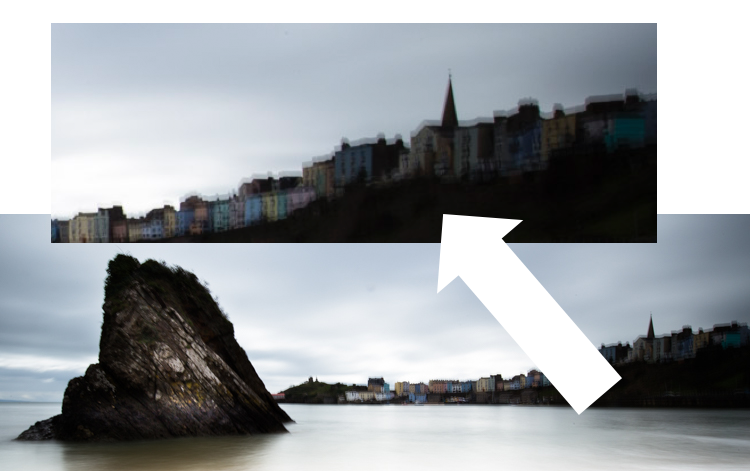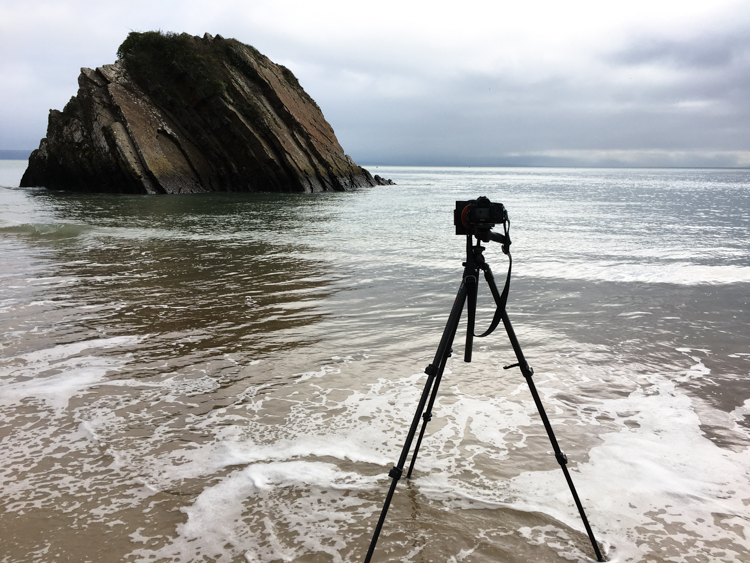Which tripod to buy?
"Which tripod is best?" has to be the question most often asked in the A Year With My Camera Facebook group. Pretty much everyone who joins already has a camera, and it's this next piece of kit that is troubling.
Which tripod is best?
There's no beating around the bush with this one: it's almost always better to have no tripod than a cheap tripod. You can get tripods for a tenner, but they will be so flimsy that they probably won't hold anything heavier than a phone steadier than you can hold with your hands. And you risk them breaking and dropping your camera.
If all you need the tripod for is so you can be hands-free, then a cheap tripod will be fine if it can hold your camera without drooping. But if you ever need to use it for long exposures (more than 1/60th second), or in any kind of weather, then you'll need something sturdier.
Playing with time
The reason most photographers want a tripod is so to be able to use long shutter speeds. Anything over 1/60th of a second, hand held, will give you camera shake:
1 second exposure: hand held on the left, tripod on the right
If you lock your camera down so it is absolutely motionless, you can leave your shutter open as long as you need to for your exposure, and eliminate camera shake completely. But if your tripod is cheap and wobbly, you are back to square one.
If you ever want to take photos like this (shutter speed 15 seconds), you do not want a tripod that lets your camera droop, or wobble in the breeze:
This is what happens when your tripod lets your camera droop during a long exposure:
Questions to ask before you buy a tripod
1. Indoors or outdoors?
If you are only every going to use it indoors, you don't need as sturdy or lightweight a tripod as if you will use it in the field. The reason? You don't have weather to deal with, and you don't have to carry it. Wind is your biggest challenge outdoors and you need the sturdiest, heaviest tripod that you can still carry, to hold your kit steady in anything more than a light breeze.
2. What's the heaviest camera & lens combination you'll use?
A small mirrorless camera with a pancake lens doesn't need the same weight of tripod to keep it steady that a full-frame DSLR with a 600mm lens will need. Weigh your kit, and check the maximum load from the tripods you are considering.
All tripod manufacturers should have information like this available. This is from Feisol.
3. Did you know you can buy the head separately from the tripod?
I use a trigger grip Manfrotto head (the one on the right below) in the studio, but it is not secure enough to use for landscape photography. You need to balance quickness of adjustment with stability. More expensive tripod heads come with a quick-release plate which you attach to your camera body. These are invaluable, and mean you don't have to screw your camera directly onto the tripod head.
4. Do you want a centre column?
In the studio a centre column is critical for getting horizontal shots. But in the field it stops you getting the tripod close to the ground. It also negates all the benefit of having a tripod in the first place, effectively turning your sturdy 3 point base into a monopod.
5. How many leg sections do you want?
This is a fundamental compromise you will have to make. 4-leg sections make for a smaller folded tripod which can fit more easily into a backpack or carry-on suitcase. 3-leg section tripods are significantly longer when folded. But 4-leg section tripods take 1/3 as long again to put up and down as their 3-leg counterparts.
6. Clip or twist?
This is a personal preference decision that you can't make until you've tried both kinds, preferably with cold hands in the rain (if you're going to be using your tripod outdoors). Each of the leg sections is adjusted either with a clip, or by twisting. Go to a shop and try both before you buy.
7. Carbon fibre or not?
Carbon fibre tripods are lighter than their aluminium/steel counterparts, but are significantly more expensive. If you're only going to use your tripod indoors you probably won't need to pay for carbon fibre.
A flimsy tripod will be knocked over by wind, waves and weather. Taking your camera with it.
8. How far can you carry it and in what?
If you'll be using your tripod in the field, and will need to carry it any further than 5 minutes, you should try it out if possible before you buy. Take your camera backpack to the shop, and see how you will manage. Try it all on. 3-leg section tripods with a head on do tend to be a bit top heavy, and you'll need a secure way to strap it down.
9. What's your budget?
I've never paid less than £350 for a tripod/head combination. It's one of the hidden costs of taking the step up to an intermediate/advanced photographer, but there is no getting around the fact that a droopy tripod is worse than useless. While you're saving up, you can go a long way with a pile of books and the self-timer:
Having said all that, if you aren't interested in outdoor all-weather photography, then you will be able to manage with a cheaper tripod, and it will certainly make your indoor photography easier. Please just be very careful that it can hold your camera safely - they damage just as easily by being dropped indoors as out.
Best tripod manufacturers
I've been very happy with my carbon fibre Manfrotto 441 tripod, but I've recently bought a lighter weight, and much smaller, Feisol CT-3442 - so new I haven't tried it yet. But I did a lot of online research using the list of questions above, and decided this one was the one for me. Gitzo and Really Right Stuff tripods are the most expensive, and reputationally the best for use outdoors. Induro and Benro have good reviews.
To pick a tripod, I would pull up each manufacturer's website, narrow down the choices depending on your budget, and then find 2 or 3 tripods that fit your requirements. You may have to make compromises (eg. I opted for a smaller-to-pack tripod with 4 leg segments over a quicker-to-erect tripod with 3).
BEGINNER’S PHOTO COURSE
A Year With My Camera is an online class, free by email, with an optional low-cost associated app. Join here and get started today:
You might also be interested in these posts:









